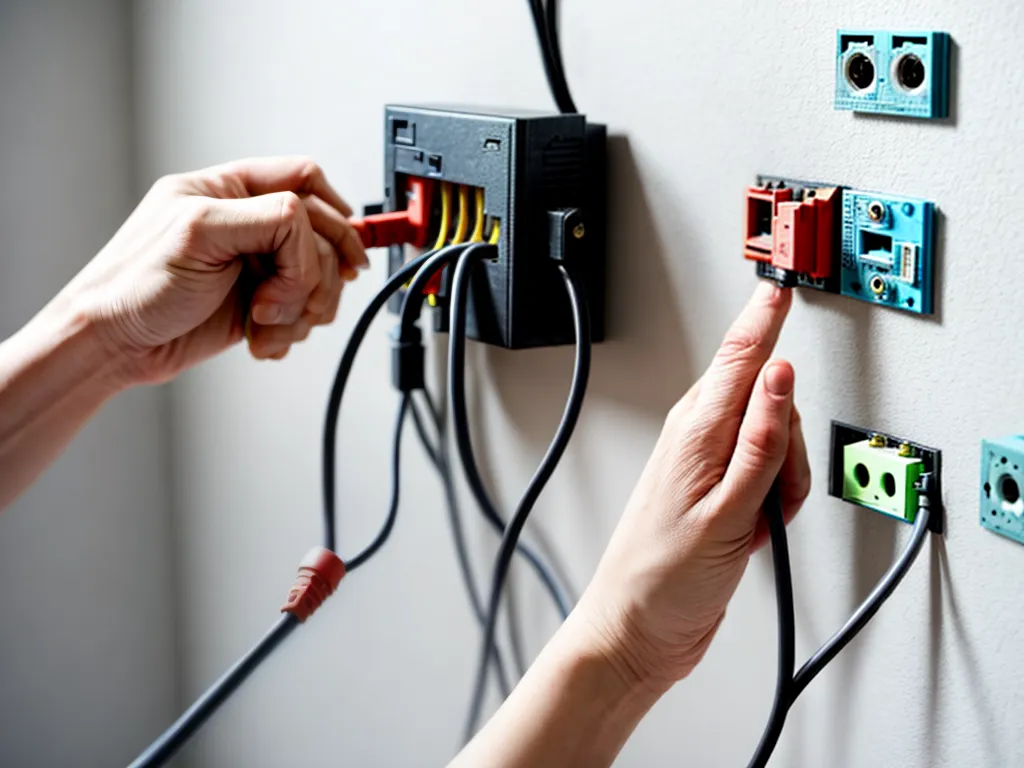
Introduction
Wiring a home can seem daunting, but with proper precautions and planning, it can be done safely without risk of electric shocks. As a homeowner, I want to empower you to take on small wiring projects to add outlets, lighting, switches, and more. In this comprehensive guide, I'll walk you through all the steps needed to wire your home safely.
Safety First - Avoiding Electric Shocks
When working with electrical wiring, safety should always come first. Here are some key tips to avoid electric shocks:
Turn Off Power at Main Circuit Breaker
Before doing any work, shut off the main circuit breaker to cut power to the entire house. This ensures wires you'll be working on are not live.
Test Wires Before Working
After turning off the main breaker, test wires with a non-contact voltage tester to confirm power is off. Touch the tester near exposed wires and verify it doesn't light up or beep.
Wear Protective Gear
Wear rubber-soled shoes, gloves, long sleeves, and safety goggles when working with electrical wiring. This gear protects against accidental shocks.
Use Insulated Tools
Only use hand tools designed for electrical work, like insulated screwdrivers and wire strippers. Avoid metallic tools which can conduct electricity.
Avoid Water
Never work on wiring near water sources or with wet hands. Water conducts electricity which greatly increases shock risk.
Choosing the Right Wire Gauge
The thickness or gauge of wire used when wiring a house is important. Using wire that's too small could overheat and cause fires.
Match Wire Size to Circuit Amperage
Select wire gauge that matches the amperage rating of the circuit breaker. For 15 amp circuits, use 14 AWG wire. For 20 amp circuits, use 12 AWG wire.
Bigger is Better
When in doubt, choose a thicker wire gauge than required. Over-sized wires are safer than wires too small for the amperage.
Use Copper Wire
Always use copper wiring rather than aluminum. Copper is a better conductor and connects more reliably.
Wiring Basics - Running Cables and Terminations
Here are some key steps to follow when running and terminating new wiring:
Plan Cable Runs
Outline all cable runs before starting. Decide if cables will run through attics, crawl spaces, or wall cavities. Have materials needed for penetrations.
Protect Cables from Damage
Use nail plates when running cables through studs to prevent accidental nailing through the wire. Keep cables away from sharp edges.
Leave Extra Length
When running cables, leave 12-18 inches of extra length at the end to allow for terminations and connections. Don't run wires taught.
Use Proper Connectors
Choose the right connectors for the gauge and type of wires being used. Twist-on wire nuts or lever nuts work for copper wiring.
Make Tight Connections
When joining wires, twist connectors tightly until no copper is exposed. Loose connections can overheat and cause fires.
Test All New Wiring
Once wired, turn the power back on and test each outlet, switch and light to verify proper connections.
Adding New Circuits - Running New Cables
Adding new home wiring circuits involves running new power cables:
Determine Power Source
Decide where the new circuit will originate. Often this is at the main circuit breaker panel.
Choose Circuit Breaker
Select an appropriate amperage circuit breaker, such as 15 or 20 amp. Install it in the main panel.
Run Power Cables
Run cables from circuit breaker to each outlet or switch for the circuit. Follow previous tips on cable runs.
Make Knockout Holes
At the panel, use a knockout punch to make hole for cables in the metal enclosure. Protect cables edges.
Connect to Circuit Breaker
Attach cable ends securely to circuit breaker using proper connectors and tight connections.
Test Circuit
Turn on power and test each component of the new circuit to ensure proper function before finishing.
Helpful Tips for Safe, Successful Wiring
Follow these additional pointers for foolproof home wiring:
-
Label all cables and connectors to prevent confusion later.
-
Avoid overloading circuits - never exceed the amperage rating.
-
For major rewiring, hire a licensed electrician if uncertain about tackling the work.
-
When in doubt, reference the National Electric Code or local regulations for standards.
-
Inspect wiring connections regularly for damage or loose cables that pose a hazard.
Conclusion
With good planning and by following basic safety procedures, wiring a home doesn't need to be intimidating. Arm yourself with the right knowledge and tools ahead of time, take it slow, and don't be afraid to call in an electrician if needed. Be mindful of avoiding water exposure or damage to wires. If ever uncertain about a wiring task, have a professional take over to ensure safety. But with the guidelines provided above, you can wire new circuits and make additions successfully!